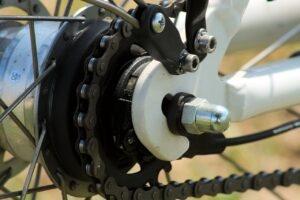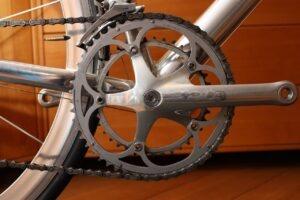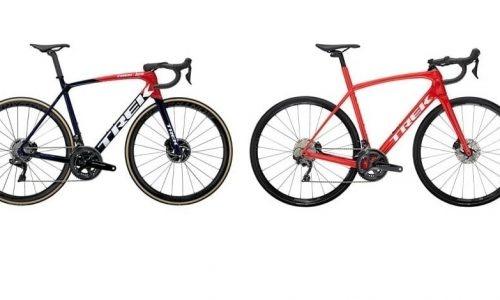Chain skipping and ghost shifting can be caused by various factors such as gear indexing issues, worn or improperly installed components, and can often be diagnosed and fixed through a methodical process of elimination.
Introduction
One of the most common mechanical problems is a slipping or skipping chain, especially under hard pedaling efforts. This is an annoying issue that is sometimes easy to diagnose and quickly fix without significant interruption to the ride, while in other situations the culprit is often more difficult to find and/or requires a more mechanically complex repair or parts replacement.
When the chain skips under pedaling load this is often called “ghost shifting” or “phantom shifting”. In this article we discuss the various reasons why your chain might be skipping or jumping gears, how to properly diagnose the issue and the relevant ways to remedy it.
Gear indexing issues
One of the most common reasons for a skipping chain is simply a drivetrain that needs a simple indexing adjustment. This is so common that even many brand new bikes can exhibit these symptoms.
The good news is that this is probably the simplest to diagnose and fix of all potential issues. Usually, a simple turn of a barrel adjuster or resetting cable tension and re-indexing the gears according to manufacturer instructions will immediately make everything run smoothly again.
Cable tension
 This is similar to a skipping chain caused by lack of proper indexing adjustment, given that cables stretch overtime, but it could also potentially cause similar symptoms on a perfectly indexed drivetrain. No bike is immune from cable-related mechanical issues.
This is similar to a skipping chain caused by lack of proper indexing adjustment, given that cables stretch overtime, but it could also potentially cause similar symptoms on a perfectly indexed drivetrain. No bike is immune from cable-related mechanical issues.
Cables on older bikes are often neglected and not refreshed in a timely manner, causing corrosion in the housing and excessive friction in the shift cables, which will result in poor shifting performance and manifest in behavior like shifting multiple gears at a time or – you guessed it – chain skipping when pedaling.
Even new bikes can suffer from the same issues due to improper installation of internal routing cables (with tight bends or kinks in the cables causing excessive friction).
Full suspension mountain bikes are sometimes susceptible to ghost shifting if cable length does not account for changes in frame geometry as the suspension compresses during riding.
Worn chain
With older bikes or those that have been ridden a lot, this is probably one of the first things that should be checked if your chain is skipping. Chains stretch with use, and should be periodically replaced to keep your drivetrain working in optimal condition.
You can use a chain checker tool to see if your chain is stretched and replaced as needed. If that doesn’t fix the issue and you have ruled out previously mentioned potential culprits (gear indexing and cable tension), you can move on to the next component to check: your cassette.
Worn cassette
If your chain is too worn and overstretched, sometimes it is too late to replace just the chain. You often have to replace your cassette with a brand new one at the same time you replace your chain if it was way beyond the optimal replacement point.
This is is due to the fact that the damage will already have been done to the cassette cogs and they will have worn out beyond the point of running well with a brand new chain.
If you put a brand new chain on a very worn out cassette, there is a very high likelihood that you will experience the dreaded skipping chain syndrome under load.
Other worn out, damaged or excessively dirty drivetrain components
These include worn out or misaligned derailleur pulleys, old or malfunctioning shifters throwing off the indexing in some gears, or broken/bent teeth on one or more cassette cogs. Build up of dirt and grime on drivetrain components will also cause shifting issues, including skipping chains.
Mismatched or incorrectly installed drivetrain components
The world of modern bicycle drivetrain can be very confusing, and there are many easy mistakes to make if you are replacing parts yourself without being well-versed in component compatibility and interchangeability.
For example, many contemporary Shimano and SRAM drivetrains have directional chains. That is, the chain is meant to be installed on the drivetrain in only one correct way that makes the right part of the chain match the cogs and chainrings as the manufacturer intended for optimal shifting.
If your bike has such a drivetrain and you get this wrong, you will likely encounter the chain slip, or at least excessive drivetrain noise and suboptimal shifting, while riding.
 Another example is the precise tolerances that modern 11, 12 and 13 speed drivetrains require to function correctly. For instance, Shiamano and SRAM specify a certain “B-tension” adjustment that requires particular attention when adjusting the rear derailleur, and if not correctly set, you may experience the annoying phantom shifts.
Another example is the precise tolerances that modern 11, 12 and 13 speed drivetrains require to function correctly. For instance, Shiamano and SRAM specify a certain “B-tension” adjustment that requires particular attention when adjusting the rear derailleur, and if not correctly set, you may experience the annoying phantom shifts.
Luckily, manufacturer installation manuals are only a few clicks away. If you are not taking your bike to your local bike shop, take a few minutes to reference the installation manuals before you fit any new parts.
Something amiss with the freehub/cassette or freehub/hub shell interface
Maybe the cassette isn’t quite sitting right on the freehub. Maybe one of the sprockets isn’t ‘clocked’ right and needs to be properly seated. Maybe the freehub pawls are worn out and the freehub, not the chain, is what is slipping under load.
Maybe the hub shell itself is cranked or otherwise damaged in a way that causes play or flex in spots that affect the function of other drivetrain components. All of those are worth checking if nothing has worked so far.
Final words
Chain skipping, ghost shifting and sprocket jumping are mechanical issues that can be tricky to diagnose and often require a modicum of patience and mechanical knowledge to pinpoint the exact cause.
The problem usually only happens when pedaling hard, and many bikes with dodgy shifting on the road or trail can shift perfectly fine on the workstand, which makes the diagnosis process more difficult.
The best way to go about exorcising the bad shifting demons from your drivetrain is to be methodical and work based on the process of elimination. Use the above tips as a general guide, and start with the easiest things to check, or those that do not require expensive parts or major repairs, and work your way down the list until you get to the fix.
If all else fails, maybe a trip to your local bike shop is in order!

Hani Morsi is a seasoned multi-discipline cyclist with a particular liking for mountain and gravel bikes. Hani is also a mountain bike coach, trail builder and experienced bike mechanic.



my 1970 schwinn varsity skips under load. I put on a new bell 10 speed chain. and cables. the 70 schwinn has no teeth on those 2 little quarter size sprockets on the derailleur.